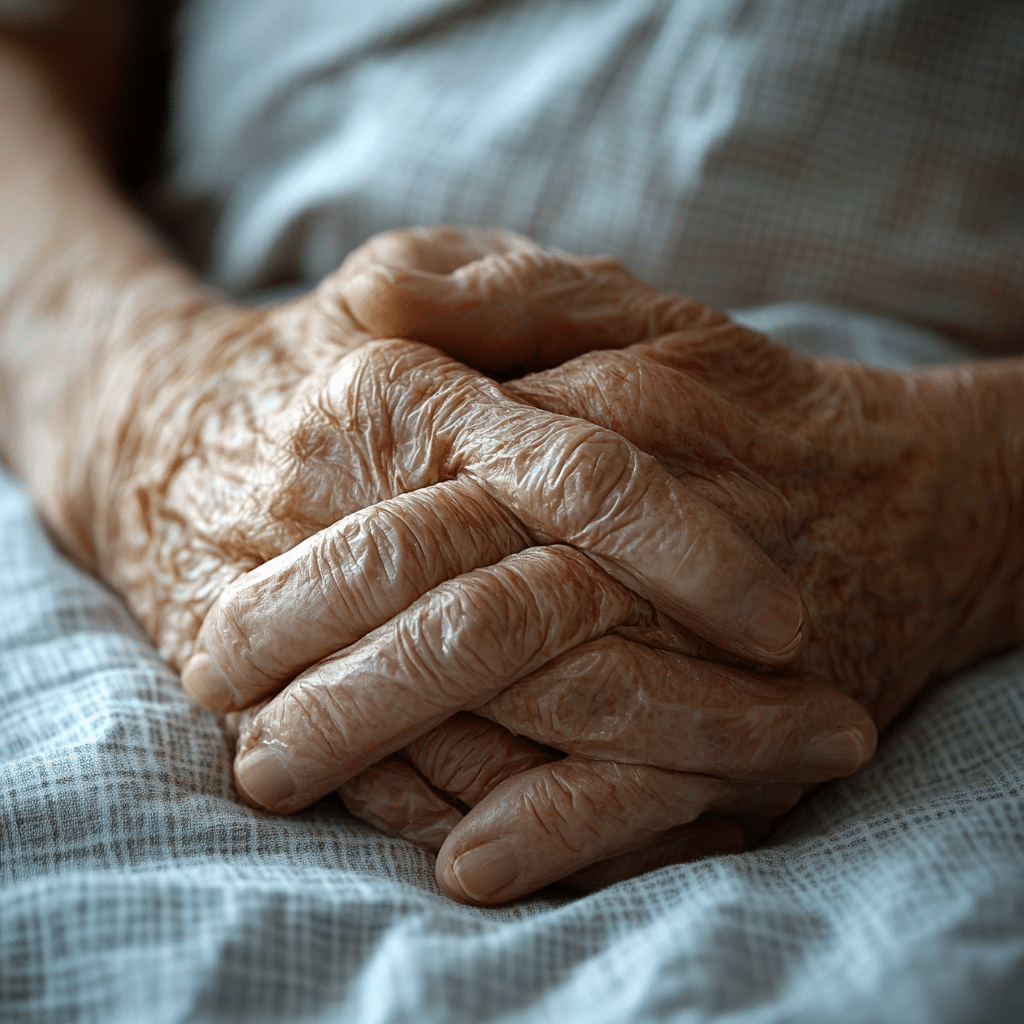Palliative care meaning often gets clouded by misconceptions. Some equate it exclusively with end-of-life care. However, that viewpoint misses the mark entirely! Palliative care serves a wider purpose—it’s all about enhancing the quality of life for individuals with serious illnesses, no matter where they stand in their journey. This compassionate approach addresses the physical, emotional, and social needs of patients and their families, bringing to life a philosophy based on altruism and resilience.

Defining Palliative Care Meaning: Beyond Misconceptions
At its core, palliative care meaning involves a whole-person approach, also known as a holistic approach. When dealing with serious illnesses, patients aren’t just defined by their condition. Instead, their overall experience is considered, promoting dignity and respect in every interaction. That’s what sets palliative care apart from other medical practices—it’s not solely about managing symptoms. Rather, it’s about nurturing individuals as a whole.
Imagine walking into a hospital room where the focus is not only on medication but on conversation, laughter, and connection. This environment cultivates not just comfort, but also hope. When we understand this concept, we realize how pivotal palliative care can be at any point in a patient’s journey, whether they’re battling their illness or simply seeking support.
Additionally, palliative care isn’t restricted to specific settings. It can commence right after a diagnosis, allowing patients to receive help alongside traditional treatments. So, whether it’s tackling pain management or assisting with emotional turmoil, palliative care meaning becomes a lifeline for those in uncertain times.

Top 7 Compassionate Benefits of Palliative Care
Effective pain relief means quality of life! Palliative care professionals tap into advanced methods, merging medication management with complementary therapies like acupuncture and mindfulness. For instance, the Cleveland Clinic’s palliative care team showcases innovative techniques yielding remarkable comfort for terminal patients. They bring science and compassion together.
Let’s face it—clear communication is crucial in healthcare. Palliative care groups improve the dialogue between medical teams, designing coordinated care plans reflecting the patient’s wishes. At Johns Hopkins Medicine, the interdisciplinary approach showcases how these teams manage intricate medical conditions and achieve better results for patients.
To foster healing, we must include family members in the conversation. Providing education and resources reduces anxiety and reinforces resilience. Dana-Farber Cancer Institute exemplifies this by extending support beyond the patient, strengthening family bonds during trying times. Together, they overcome adversity.
It’s not all about physical health! Palliative care emphasizes emotional and spiritual support. Look at the Mayo Clinic’s programs that illustrate how addressing psychological needs can lead to better coping strategies for patients facing serious illnesses. This thorough support nurtures a sense of overall well-being that is truly transformative.
Taking the time to understand a patient’s values and preferences allows for seamless advanced care planning. The American Heart Association works tirelessly to educate individuals about advance directives, easing transitions during critical moments. Knowing one’s wishes are honored brings peace during the most turbulent times.
Studies—such as those from the Journal of Palliative Medicine—discover that patients receiving palliative care alongside curative treatments report significant quality-of-life improvements. This testimony showcases the resilience that emerges when patients access compassionate support throughout their health journeys.
Palliative care doesn’t wait for the end! Patients can benefit from this care beginning at diagnosis and continuing through their entire illness journey. MD Anderson Cancer Center provides such support from the moment patients learn about their conditions, reinforcing their ability to find strength amid health challenges.

The Epistemology and Pedagogy of Palliative Care
To truly grasp palliative care meaning, we must delve into its epistemology. This exploration comprises the ethical foundations guiding practitioners, ensuring they deliver care filled with compassion and understanding. By analyzing real-life experiences of patients and their families, educators in palliative care develop teaching methods emphasizing empathy—the bedrock of effective practice.
Interestingly, dental professionals, like dental hygienists, create similar patient-focused interactions. Although the dental hygienist salary averages around $77,000 annually, the commitment to prioritizing patient comfort and trust spans both fields. By building meaningful relationships, practitioners foster an atmosphere of respect, which is crucial whether in the dentist’s chair or the hospital bed.

Innovating Palliative Care Practices for the Future
Palliative care continuously evolves with society. Innovative approaches are integrating technology and modern communication methods, broadening access for patients in need. For instance, platforms like Amwell facilitate virtual consultations with palliative specialists, making support more reachable. This digital leap allows countless individuals to connect without geographical limits.
Ongoing training programs adapt, including new modalities that enhance healthcare professionals’ abilities to provide empathetic care. As palliative care restructures, future practices will foster deeper relationships between patients and practitioners.
In conclusion, palliative care meaning transcends the stereotypes often associated with it. It’s a holistic, compassionate approach embraced at all stages of illness that enriches the lives of both patients and families. The benefits are undeniable—intensifying quality of life while providing the necessary support along the way. As we redefine our understanding of this crucial service, we promote dignity, compassion, and respect for health journeys worldwide. Palliative care is not just a service; it is a steadfast companion through the trails of health challenges, reminding us that every life deserves value and care.
For deeper insights into related aspects of compassionate care, you might even consider exploring engaging topics like the latest in music And arts at events or learning about platforms like Amazon Web services that enhance our understanding of healthcare technologies.

Palliative Care Meaning: Engaging Trivia and Interesting Facts
Understanding Palliative Care
When we dive into the palliative care meaning, we’re like explorers piecing together a compassionate puzzle. Palliative care isn’t just a medical term; it’s about improving quality of life for those facing serious illnesses. Did you know that palliative care originated over 50 years ago? The movement really kicked off in the 1960s, growing in popularity as it shifted focus from just treating diseases to caring for patients holistically—mind, body, and spirit. This approach is akin to how an exhibit at the American Museum Of Natural History captures the essence of humanity through storytelling.
Compassionate Benefits
Now, the glorious benefits of palliative care are akin to the sweet taste of Wawa Smoothies on a hot summer day—refreshing and life-affirming! For patients and families, the process can reduce the emotional and physical toll that serious illness often burdens them with. Interestingly, studies show that people receiving palliative care may have longer life spans compared to those getting traditional treatment alone. It’s a bit like how a well-structured Vlookup formula can help make sense of a messy spreadsheet; palliative care offers clarity amidst difficulties.
Broadening Perspectives
While many may associate palliative care primarily with end-of-life scenarios, it’s important to note that it can be beneficial at any point in the illness journey. Just as launching Dragon Ball opens up a multitude of adventures for fans, palliative care opens a dialogue about hopes, fears, and preferences at every phase of treatment. Plus, those receiving such care often say they wish they had known about it sooner! Being proactive is key, much like keeping up with the trends—think Yeezy Crocs—to ensure you’re living your best life.
In a nutshell, understanding the palliative care meaning enriches not only our knowledge but also how we can provide support for those going through tough times. Embracing this approach can make a world of difference, turning potentially isolating experiences into shared journeys of compassion and connection. So, let’s spread the word, just as the buzz around a Chainsaw Man movie captures attention and ignites conversations!

How long does palliative care last?
Palliative care can last for years for some people, while others may receive it only near the end of their lives. It’s all based on individual needs and circumstances.
What does it mean when a patient is put on palliative care?
When a patient is put on palliative care, it means they’re receiving specialized medical support that focuses on easing pain and other uncomfortable symptoms related to a serious illness, without needing those conditions to be curable.
What stage of life is palliative care?
Palliative care can happen at any stage of life and can start right after diagnosis or later as the illness progresses. It’s all about providing support when you need it.
Is palliative care the same as end-of-life care?
Palliative care isn’t the same as end-of-life care, though end-of-life care is a form of palliative care. You can receive palliative care alongside other treatments, even if you’re still aiming for a cure.
What is the average survival time for palliative care patients?
There’s no set average survival time for palliative care patients since it varies widely based on individual health conditions, treatment responses, and personal circumstances.
What is the first organ to shut down when dying?
The first organ to shut down when dying can vary, but typically, the liver and then the kidneys are among the first to lose function as the body starts to shut down.
What is the downside of palliative care?
Some downsides of palliative care might include misunderstandings about its purpose or potential feelings of hopelessness, but most people find it provides comfort and support through tough times.
How long will Medicare pay for palliative care?
Medicare generally covers palliative care as long as it’s part of treatment for a serious illness. Coverage specifics can depend on individual plans, so it’s a good idea to check.
What is likely to happen 2 weeks prior to death?
Two weeks prior to death, you might see changes like decreased energy, less eating or drinking, and more time spent sleeping as the body begins to slow down.
Why would a doctor recommend palliative care?
Doctors often recommend palliative care to help manage symptoms, improve quality of life, and provide support to both patients and their families during serious illness.
What are the 7 C’s of palliative care?
The 7 C’s of palliative care include comfort, communication, coordination, continuity, care planning, collaboration, and compassion, which all focus on providing holistic support.
Can you recover from palliative care?
You can recover from palliative care if it’s used successfully to manage symptoms of a serious illness, allowing you to potentially improve your health or well-being.
Is palliative care better than hospice?
Palliative care isn’t necessarily “better” than hospice; rather, they serve different purposes. Palliative care can start before hospice, focusing on relief through any stage of the illness.
Can you live for years with palliative care?
Yes, some people can live for years while receiving palliative care, especially if it supports other treatment plans and addresses symptoms effectively.
What is the most common symptom seen at the end-of-life?
The most common symptom seen at the end of life is often pain, but many also experience fatigue, breathlessness, and changes in consciousness as they near death.
Is palliative care the last step before hospice?
Palliative care can be the last step before hospice, particularly when the focus shifts solely to comfort care without further curative treatments.
What are the four phases of palliative care?
The four phases of palliative care are prevention, assessment, treatment, and care coordination, aimed at providing comprehensive support throughout a patient’s journey.
What is the average age of palliative care patients?
There isn’t a specific average age for palliative care patients since it can be relevant for anyone with a serious illness, though many tend to be older adults.
What are the three levels of palliative care?
Palliative care generally operates at three levels: primary (provided by any healthcare provider), secondary (specialized palliative care teams), and tertiary (advanced, comprehensive palliative care services).


















